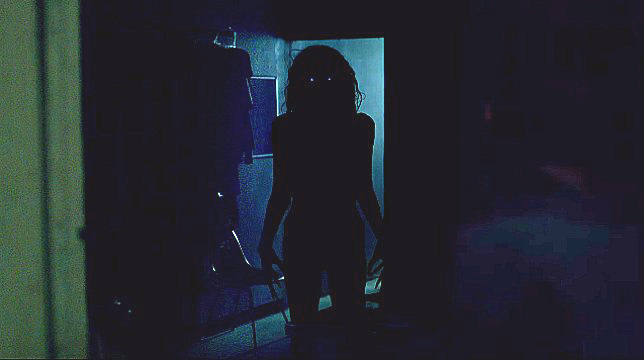A producer once asked me for a script treatment for a movie idea I pitched her. Being new to filmmaking I had no Idea what this was. I told her “I can send you the script.” She replied “oh nevermind just send me that” I was still curious about what treatment was, so I decided to look it up seeing as this term will come up again one day.
What Is a Script Treatment? A Script Treatment is a 10 to 20-page outline of a screenplay. The purpose is to Communicate the story, characters, and acts of the script. Its generally used for marking the concept of a film to producers and studios.
Now that you know what a script treatment is, did you know that there are nine working parts of one?
A Working title
A working title is a dummy name the screenwriter puts as a place holder for the project during its development. Also called a production title.
An example of this I’ll use a screenplay I’m currently writing. The working title “Astronauts & Thieves.” For a working title make it easily recognizable or something that can catch the readers eye when seen. When someone sees the one sheet (movie poster) they will understand its implication instantly. Remember, don’t sweat this too much emphasis on the word working.
The Writer’s Name and contact
Your contact information is for if the treatment gets passed around like most things in Hollywood does. Quintin Tarantino’s film Resovar Dogs was passed to three different hands before it got into Harvey Keitel.
WGA Registration number
If you know what this is then your all good, if you don’t, WGA is the Writers Guild of America that helps represent and protect TV and film writers. It cost $20.00 to register. You can submit your scripts, treatments, synopses, and outlines. Also, they accept stageplays, novels, books, short stories, poems, commercials, lyrics, drawings, and music. Submit your work to them first so if anything happens illegally, they got your back.
A logline
A logline is a 1-3 sentence teaser that hooks the reader int he dramatic narrative of the script. Longines is looked at like a headline for your movie. Some people won’t even read your writing if the logline is trash. Loglines can get complicated so for reference I will give you some famous ones.
“A computer hacker learns from mysterious rebels about the true nature of his reality and his role in the war against its controllers.”
- The Matrix
“Lion cub and future king Simba searches for his identity. His eagerness to please others and penchant for testing his boundaries sometimes get him into trouble.”
- The Lion King
“The lives of two mob hit men, a boxer, a gangster’s wife, and a pair of diner bandits intertwine in four tales of violence and redemption.”
- Pulp Fiction
Introduction to key characters
These characters include your main characters and some supporting characters. For example in the matrix you would need to have introductions for:
- Neo
- Trinity
- Morfious
- Agent Smith
- Cypher
There are more characters in the story of course, but without these characters, the story couldn’t exist. Think about the entire plot of your film; most people will keep out Switch and Mouse seeing as they’re not necessary for explaining the plot.
Who, What, When, Why and Where
Writing a script treatment includes this portion to give the reader a good grasp on what’s happening in the story your telling. These questions provide the reader the meat of the treatment. You don’t have to list the items out answer them.
The Act Summaries
Act 1 Summary (Set the Scene)
Dramatize the main conflicts. Give them the basics of what happens right up until the inciting incident.
Act 2 Summary (The Main Battle)
You should dramatize how the conflicts introduced in Act 1 lead to a crisis. Act two should be the most significant part of the treatment seeing as usually, the second act is the most substantial part.
Act 3 Summary (The Ending)
Dramatize the final conflict and resolution. Give the reader how this all comes together. One thing to remember is this is just a guideline. I’ve seen plenty of film treatments from some of Hollywood’s most famed movies, and all of them didn’t follow this formula exactly. As evident in the next section below.
So don’t stress about things like format and structure. The main point of a film treatment is to sell the script or the movie nothing more. Get people excited about seeing this thing on the big screen.
When do you write a script treatment?
You should begin writing your script treatment before you start the screenplay. Giving you a chance to work out your story and plot hole’s that could hold your screenplay from being great.
You also might consider writing one if a producer is interested in your film idea. The treatment will give the producer something to shop around while you’re chipping away at the script.
Famous Film Treatment Examples
Below are three film treatment examples that you can model from some older movies and some newer movies. Click the links to view and download the treatments.
Lights out directed by David F. Sandberg
What’s interesting about this treatment is he admittedly didn’t even know what a script treatment was. He gave it his best shot, and this is what he came up with.

You can see he hit the essential points of the outline; we gave earlier in the post. He had already had a deal with the production company. The film was based off a short he previously did that won Who’s there a horror film festival when you have an inside like that you have some leeway to play.
The Terminator directed by James Cameron
This treatment only consists of the acts and the who what when where and why portion, which are the most critical parts of the treatment. Without those parts, you don’t have a marketing piece you have a resume of a writer.

So the question I had that you might have right now is, why is this so long? To answer that question you would have to see the movie. Think about The Terminator. It’s a new world, and a new world has to be explained. You can start off talking about act one of a half man half machine creature from the future. No producer is going to know what the hell you’re talking about. You have to engulf them in this world.
Mr. and Mrs. Smith directed by Doug Liman
This treatment comes the closest to the format Hollywood suggested with its working title, character set up and story. The story portion contains all three acts as well as the when where who section. This is the case because the writer went to film school and it paid off.

What not to include in a script treatment
The Micro Details
You don’t need to let your readers who that Jenny’s book is the reason Sarah found out she was cheating on steve. That small minute detail and is not necessary. When thinking of treatments think of what’s needed for the story to complete itself.
The script
Say if you already are writing your script. You might have half of it written already. Just don’t throw your 60-page document into the script treatment. Rember you should stick to the prose.
Actor List
Writing something like this it’s understandable if you have people in mind to play specific roles, this isn’t your job. Don’t write Natalie Portman’s name down as the lead. The only way this would be acceptable is if you had an agreement with Natalie Portman in being attached to the script.
So now that we went over everything about script treatments its time to dive into things that are related.
Short Film Script Treatments
For the most part, everything is still the same in a short film script treatment as it is in a feature, the only difference is it’s shorter. Something that is cut out is:
No Act Explanation
There is no need for this section. Short stories and films usually aren’t long enough to complete one act so you can ignore this part. Who, what, when where and why is the only explanation you would need after you can write a short paragraph about the ending if you have some reversal or surprise ending.
How long is a short script treatment?
It can be just a page long. Most short films are anywhere from 3 to 20 pages long. Every treatment you write is an overview selling the story you don’t want to end up rewriting the whole thing to fill in some unrealistic page count.
Short film script treatment example
Take a look at the following script treatment the writer clearly outlines the character and the breakdown by the minute. Take this as an example to follow if your film is less than 10 minutes long.
Notice that there are not WGA numbers on this treatment, this is likely because this person is just going to make this by themselves and the purpose of this is to give to the cast and crew. If you are self-producing, you can forget about the first three steps in the guideline above altogether.
How to Write a Treatment for a Tv Show
Again the guideline above is the solution with a few differences that we will highlight below:
The Synopsis
The synopsis comes after the logline in the guideline order above. A synopsis is a broad overview of the series, making the world and the dynamics of the characters as clear to the reader. Networks want to see the commercial aspects of your story. They want to find the hook, so find the most compelling points of the series and highlight those.
Pilot episode outline
For those, you don’t know a pilot is the first episode in a TV show that is made to test the quality of a show. A pilot episode is usually 30 minutes, but recently TV is being pushed to a one hour slot.
A breakdown of the pilot is needed for your script treatment. Run through this just as if you were running through a story breakdown in a regular film script.
Future episodes List
A list of anywhere from 8 to 10 episodes is needed. The network needs to see where this show is going. Now for this section, you don’t need an outline like for the pilot you can write a logline for each one.
I was unable to find an example of this one, but if you want the full breakdown on TV treatments you can check out
Shonda Rhimes Teaches Writing for Television Master class
She’s the creator of Grey’s Anatomy, and Scandal two shows still on TV and doesn’t look like they’re going away anytime soon. If you need any more proof, she signed a 150 million dollar deal with Netflix for 8 TV shows. Its safe to say Shonda Rhimes is a TV goddess. You will learn how to put together a pilot, dialogue, characters and how a writers room works at the highest level.

She will not only show you how to write a film treatment she will teach you how to pitch, where to pitch.
Conclusions
To wrap up, I’ve presented a template for script treatments, but from the post examples, you can see that treatments come in all shapes and sizes and unlike script format, there are many ways to do one. What they all have in common is:
1.) Excite the reader about the story. It’s for marketing guys remember.
2.) Introduce the main characters.
3.) Tell the story Giving the beginning middle and end a complete story.
4.) They keep you wanting more. Even in James Camerons longer than the standard treatment he left you hanging for more of the story. He sold this before writing the screenplay like for a lot of money.
Related questions
How long should a script treatment be?
Your script treatment should be anywhere from 5 to 20 pages long depending on your story if you’re introducing the reader to a new world like James Cameron’s Terminator then your treatment could reach 40 pages easily.
How long does it take to write a treatment?
You usually have 12 weeks to write a first draft script so your treatment should take no longer than two weeks.
Can you sell a movie treatment?
Yes, you can sell a movie treatment, and many have sold treatments that became scripts and movies. Doug Liman writer of Mr. and Mrs. Smith sold his script treatment after college, and it started his screenwriting career.
Why do you need a script treatment?
You need a script treatment because one its the best marking tools you can use to sell your screenplay. The second reason is you can work out your story beforehand giving clear vision and reducing plots holes before you start writing.

